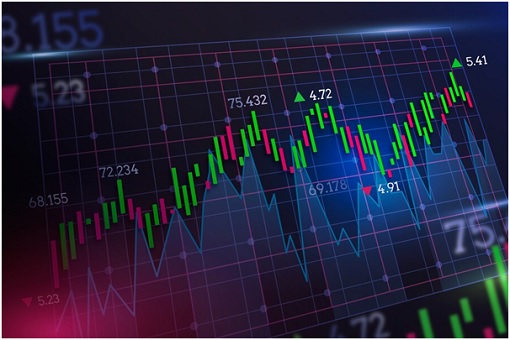CFD trading offers immense profit potential for those who can capitalize on market volatility. However, realizing consistent gains requires skillful approaches based on proven strategies. This guide reveals the top techniques successful CFD traders use to optimize profits.
Why Trade CFDs?
Contracts for differences provide a unique way to profit from asset price movements without owning the underlying instrument. These innovative financial derivatives allow you to make money on price fluctuations across global markets — from commodities and indices to cryptocurrencies.
Here’s how it works: CFD trading involves opening a contract with a broker. The contract allows you to exchange the difference in the asset’s price from when the contract opens to when it closes. You don’t own the asset itself. Instead, your profits or losses are determined by the direction and magnitude of the price change.
So, why trade CFDs instead of the actual assets directly?
- Contracts for differences provide higher leverage than traditional assets, allowing greater exposure with less capital outlay. While leverage magnifies potential gains, it can also compound losses if used imprudently.
- CFD platforms grant access to global markets for around-the-clock buying and selling. Investors can go long or short on various worldwide assets from a single account.
- CFDs have no shorting rules, borrowing costs, or differing margin requirements for long versus short positions. Traders can capitalize on falling prices freely.
- Professional order types and competitive spreads create favorable execution. Some brokers offer guaranteed stops for a fee.
- Contracts for differences are not bound by day trading limits or minimum capital requirements of other markets. Accounts can be opened with as little as $1,000.

Key Considerations for Profitable CFD Trading
Traders should research strategies thoroughly and never risk more capital than they can afford to lose. With proper planning and execution, CFDs present an opportunity to generate profits. Consider the following approaches:
- Set Clear Goals
Before choosing a strategy, identify your goals. Are you looking to profit consistently, hedge other investments, or gain experience? Your goals will dictate what strategies to pursue. Keep them in mind at all times.
- Evaluate Your Risk Tolerance
Assess your risk appetite realistically. If you are risk-averse, opt for lower leverage ratios and position sizes. More risk-tolerant investors can use higher leverage to pursue more significant profits. Choose strategies aligned with your risk tolerance.
- Understand the Markets You Trade
Strategies vary across asset classes. A strategy for trading stock CFDs may not be optimal when trading commodities. Take time to understand the unique attributes of the markets you want to enter. Then, select strategies explicitly suited to those markets.
- Backtest Strategies Before Using
Historical market data enables backtesting strategies before deploying your capital. Backtesting reveals how a strategy would have performed in past market conditions. This helps evaluate strategy effectiveness and fine-tune elements that need improvement. Always backtest before committing funds.
Effective CFD Trading Strategies To Consider

Employ Effective Risk Management
Stop losses and proper position sizing are two key tactics. With stop losses, you set a price threshold where you will exit a losing position to limit the downside. Position sizing involves allocating an appropriate percentage of capital to each trade based on factors like volatility. Effective risk management will help you survive inevitable losing positions and remain in the game to capture wins.
Conduct Fundamental Analysis
Fundamental analysis examines real-world events and data that can influence asset prices and lead to opportunities. Stay updated on economic, political, or social news releases that may impact markets. Also, study company reports and financial statements to gauge performance. Use economic calendars to anticipate upcoming announcements that could cause sharp price movements. Determine whether events suggest bullish or bearish conditions and open positions accordingly. Fundamental analysis takes effort but can reveal factors that will move markets over the long term.
Employ Technical Analysis
Technical analysis takes a different approach by evaluating historical price charts and patterns. Look for formations like ‘head and shoulders’ or triangles that may signal future moves. Identify support and resistance levels where reversals often occur. Spot trends early and trade in their direction. Technical indicators like moving averages and RSI can also generate signals. Finding patterns, tools, and techniques that fit your style is critical. Technical analysis relies on the tendency of prices to exhibit repetitive behavior that can be measured and traded profitably with experience.
Common CFD Trading Style Used by Experts
Various strategies can be used when trading contracts for difference. Let’s explore some common approaches.
Intraday Trading
Intraday or day trading involves opening and closing positions within the same trading day without holding positions overnight. Technical analysis tools can help investors determine if an asset may rise or fall in price. Traders may close ranks when they have reached a satisfactory profit or acceptable loss level. Stop-loss and take-profit orders can automate this process. The intraday strategy focuses on short-term opportunities.
Swing Trading
Swing traders aim to identify potential price trends and then hold an asset for a period ranging from a day to several weeks to profit. Ongoing market monitoring and technical analysis are required. This strategy is named swing trading because it aims to capture price swings or oscillations. It takes a medium-term timeframe.
Position Trading
Position, or trend trading, involves holding an asset for an extended period and closing the position at an optimal time. This requires monitoring asset performance with time and patience, often incurring holding fees. A potential downside is accruing overnight fees from keeping positions open long-term. Position trading takes a long-term outlook.

News Trading
This approach relies on staying abreast of major financial news and using that knowledge to forecast market moves. It can include watching economic and corporate calendars for earnings reports and economic data releases, as positive or negative results may shift investor sentiment. Fundamental analysis provides insights into how news may impact asset prices.
Getting Started with CFDs
Now that we’ve covered the strategies, here’s how to start the process. CFD trading allows investors to profit from price movements across various global markets. To get started:
- Choose a regulated broker and open an account.
- Select which markets you want to enter, such as forex, indices, commodities, or cryptocurrencies.
- Based on your market analysis, decide whether to buy or sell a CFD.
- Understand CFD pricing, margins, and leverage before opening a position.

|
|
November 14th, 2023 by financetwitter
|


|

|

|

|

|

|




























Comments
Add your comment now.
Leave a Reply